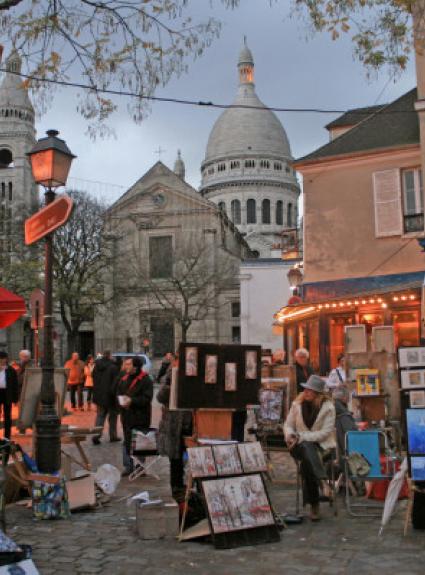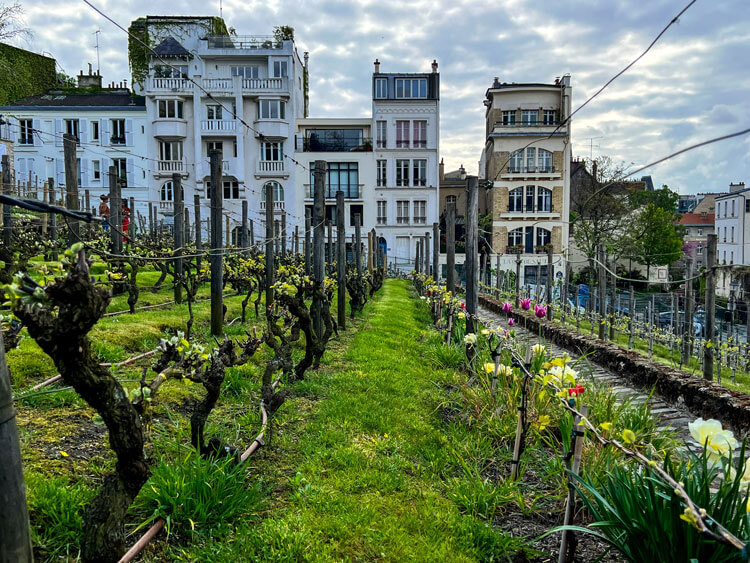Montmartre
Paris, France

Visit Montmartre in Paris, France—an iconic hilltop neighborhood known for its artistic history, bohemian charm, and stunning landmarks like the Sacré-Cœur Basilica. A top destination for Montmartre tourism and one of the most beloved historical sites in France, Montmartre offers unforgettable things to see in Paris, from panoramic city views and lively artist squares to unique museums and romantic hideaways. Discover why visiting Montmartre is an essential part of exploring Paris.
Perched on a hill in the 18th arrondissement of Paris, Montmartre is one of the city’s most iconic and charming neighborhoods—a must-visit for anyone exploring the French capital. With cobbled streets, bohemian history, stunning views, and the magnificent Basilica of the Sacré-Cœur, Montmartre tourism offers a perfect blend of art, culture, and romantic allure. Whether you're interested in historical sites in France or simply seeking out unforgettable things to see in Paris, Montmartre promises an enriching experience. A Brief History of Montmartre Montmartre's roots stretch back to the 3rd century when it was a rural village on the outskirts of Lutetia (ancient Paris). The name Montmartre is believed to derive from “Mount of Martyrs,” referencing the martyrdom of Saint Denis, the first bishop of Paris, who was beheaded here. During the 19th century, Montmartre transformed into a hub for avant-garde artists and free thinkers, attracting legends such as Pablo Picasso, Vincent van Gogh, Henri Toulouse-Lautrec, and Salvador Dalí. The neighborhood’s artistic spirit still pulses through its narrow lanes and vibrant squares today. Top Features and Highlights The crown jewel of Montmartre is undoubtedly the Sacré-Cœur Basilica, a dazzling white church that dominates the skyline. Built between 1875 and 1914, the basilica features Romano-Byzantine architecture, intricate mosaics, and the largest mosaic in France—Christ in Glory—adorned on its ceiling. Visitors can climb to the dome for breathtaking panoramic views of Paris. Another major highlight is Place du Tertre, a lively square where artists set up their easels and offer portraits or sell original paintings. It’s a living tribute to the area’s artistic heritage. Nearby, you’ll find the Espace Dalí, a museum dedicated to Salvador Dalí’s surrealist works. Don't miss the Montmartre Vineyards, one of the last remaining vineyards in Paris, and Le Mur des Je t’aime (“The I Love You Wall”), a romantic art installation displaying “I love you” in over 250 languages. What Makes Montmartre Unique What sets Montmartre apart from other Paris neighborhoods is its bohemian soul and village-like charm. It’s where modern art found a home before it was celebrated anywhere else. Few know that Montmartre once declared itself an independent republic—the "Free Commune of Montmartre"—as a humorous protest in the 1920s, a title that still proudly appears in local cafés and festivals. Its steep streets and stairways have been immortalized in countless films, from Amélie to Midnight in Paris, and its energy—equal parts nostalgia and creativity—is unlike anywhere else in the world. There’s also a tiny, still-active windmill, Le Moulin de la Galette, which inspired numerous impressionist paintings. Current Use and Visitor Information Today, Montmartre is a vibrant blend of residential calm and tourist energy. It’s a favorite for strolling, café-hopping, and discovering hidden corners full of history. While there's no fee to visit Montmartre itself, entry to the Sacré-Cœur Basilica is free, though climbing the dome (300 steps) costs around €7. The Espace Dalí charges a small entrance fee (around €12), and local guided tours can enrich your visit with in-depth stories and context. Montmartre is open year-round and is best explored on foot. The area is hilly with cobblestone paths, so comfortable shoes are a must. The nearest metro stations are Anvers (Line 2) and Abbesses (Line 12). For a scenic approach, take the Montmartre funicular—a unique ride up the hill covered by a regular metro ticket. To truly enjoy Montmartre, visit early in the morning or around sunset to avoid the biggest crowds. Respect the local artists and residents, and take your time soaking in the atmosphere that has captivated dreamers for centuries.
Location
Coordinates: 2.3431, 48.8867
View on Google Maps




